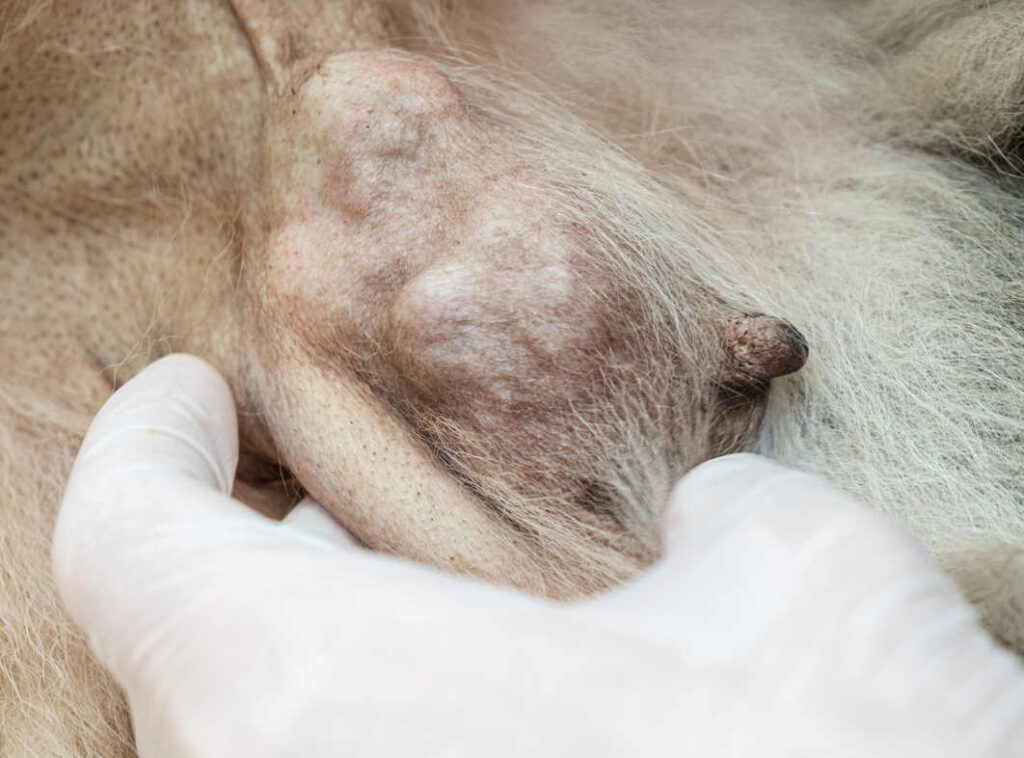If your dog has been diagnosed with a benign tumor, you’re probably wondering how much time you have together. It’s natural to worry about your furry friend’s health and what the future holds.
The good news is that benign tumors are often not life-threatening, but understanding how they affect your dog’s lifespan is key to giving them the best care possible. You’ll discover important facts about benign tumors, what signs to watch for, and how to help your dog live a happy, comfortable life.
Keep reading to find out what you need to know to protect your loyal companion.
Credit: vandersen-8439.medium.com
Benign Tumors In Dogs
Benign tumors in dogs are non-cancerous growths that can still impact your pet’s health and comfort. Unlike malignant tumors, they do not spread aggressively but may cause problems depending on their size and location. Understanding these tumors helps you make informed decisions about your dog’s care and treatment options.
Common Types
- Lipomas:Soft, fatty lumps often found under the skin. They are usually harmless but can grow large.
- Sebaceous Cysts:Small bumps filled with oily material, typically appearing on the skin surface.
- Warts (Papillomas):Caused by viruses, these are generally small and may appear around the mouth or eyes.
- Fibromas:Firm, fibrous growths that can develop in the skin or mouth.
Causes And Risk Factors
Benign tumors often develop due to a mix of genetics and environmental influences. Some breeds have a higher tendency to develop lipomas, such as Labrador Retrievers and Doberman Pinschers. Age also plays a role—older dogs are more likely to develop these growths.
Diet and exposure to certain chemicals might contribute, but the exact triggers remain unclear. Have you noticed any lumps on your dog that grow slowly over time? Early vet visits can catch these tumors before they become a bigger issue.
Symptoms To Watch
- Visible lumps or bumps under or on the skin that don’t go away.
- Changes in size, shape, or color of a lump.
- Discomfort or pain when touching the area.
- Interference with movement or normal activities if the tumor is near joints or muscles.
If your dog shows any of these signs, don’t delay in seeking veterinary advice. Sometimes what appears harmless can affect your dog’s quality of life more than you expect. How closely are you monitoring your dog’s skin for unusual changes?
Impact On Dog’s Lifespan
A benign tumor often has little effect on a dog’s overall lifespan. Many dogs live normal, healthy lives with proper care and monitoring. Early detection and treatment can help maintain their quality of life.
Understanding how a benign tumor can affect your dog’s lifespan is crucial. While benign tumors are not cancerous and don’t spread to other parts of the body, they can still impact your dog’s quality of life. Knowing the factors that influence these effects can help you make informed decisions for your furry friend’s health.Tumor Size And Location
The size and location of a benign tumor play a significant role in its impact on your dog’s lifespan. A small, non-obstructive tumor may have little to no effect on your dog’s daily activities. However, a larger tumor or one located near critical structures can lead to discomfort or mobility issues. If a tumor is located in an area that can impede movement or press against sensitive nerves, it may cause pain. This can affect your dog’s ability to enjoy daily walks or playful activities. Regular vet check-ups can help monitor these changes and provide guidance.Effect On Vital Organs
When benign tumors grow near vital organs, they can potentially affect their function. For example, a tumor near the heart or lungs can interfere with normal breathing or circulation. This can lead to fatigue or decreased stamina in your dog. A personal experience with my Labrador, Max, illustrates this. Max had a benign tumor near his liver that, although not life-threatening, required careful monitoring. We worked closely with our vet to ensure it didn’t impact his overall health.Potential Complications
Even benign tumors can lead to complications if not monitored properly. They can become ulcerated or infected, causing additional health issues. In some cases, surgical removal might be necessary to prevent these complications. Consider the possibility of your dog experiencing discomfort or changes in behavior. Are they avoiding activities they used to love? Monitoring these signs can help you address issues promptly and maintain your dog’s quality of life. By being proactive and attentive to these factors, you can help ensure your dog lives a long and happy life, even with a benign tumor.Diagnosis And Monitoring
Diagnosing and monitoring a benign tumor in dogs is essential for ensuring a long, healthy life. Early detection helps manage the condition effectively. Regular observation and veterinary visits keep the tumor under control and prevent complications.
Diagnostic Methods
Veterinarians use several techniques to diagnose benign tumors in dogs. Physical exams help locate lumps and assess size. Fine needle aspiration collects cells for lab analysis. Imaging tools like X-rays or ultrasounds reveal tumor depth and involvement. Biopsies confirm if a tumor is benign or malignant.
Regular Check-ups
Routine vet visits track tumor growth and overall health. These check-ups identify changes early. Owners should observe the tumor’s size, shape, and texture at home. Keeping a journal of changes supports accurate vet assessments. Regular blood tests may also help monitor the dog’s condition.
When To Seek Veterinary Care
Seek veterinary care if the tumor grows rapidly or changes color. Watch for signs of pain, bleeding, or discharge. Notice if your dog shows discomfort or changes in behavior. Sudden weight loss or loss of appetite also signals a need for a vet visit. Prompt action can prevent complications and improve outcomes.

Credit: seniortailwaggers.com
Treatment Options
When your dog is diagnosed with a benign tumor, deciding on the right treatment can feel overwhelming. Understanding your options helps you make informed choices that suit your dog’s health and lifestyle. Treatment aims not only to remove or control the tumor but also to maintain your pet’s quality of life.
Surgical Removal
Surgery is often the most straightforward way to remove a benign tumor. If the tumor is accessible and small enough, your vet may recommend removing it completely to prevent any future complications.
Recovery time varies, but many dogs bounce back quickly with proper care. Have you considered how the location of the tumor might affect the surgery’s complexity and your dog’s comfort afterward?
Non-surgical Approaches
Not all tumors require surgery. Sometimes, vets suggest monitoring the tumor closely, especially if it’s slow-growing and not causing problems.
Other options include medications to shrink the tumor or slow its growth. These treatments might suit dogs with health issues that make surgery risky.
Managing Symptoms
Even when surgery isn’t possible, you can still help your dog feel better by managing symptoms. Pain relief, anti-inflammatory drugs, or special diets can reduce discomfort and improve well-being.
Regular check-ups ensure any changes in the tumor or your dog’s health are caught early. What daily signs might help you spot if your dog needs extra care?
Prognosis And Quality Of Life
Understanding the prognosis and quality of life for dogs with benign tumors helps pet owners make informed choices. Benign tumors do not spread quickly or invade other tissues. Many dogs live comfortably for years with proper care and monitoring. The key lies in regular vet visits and watching for changes in the tumor or behavior.
Life Expectancy With Benign Tumors
Dogs with benign tumors often have a normal life expectancy. These tumors grow slowly and usually do not affect vital organs. Some dogs live many years without symptoms or complications. Early detection and treatment improve outcomes. Vets may recommend removal if the tumor causes discomfort or risks turning malignant. Otherwise, they monitor growth and health regularly.
Maintaining Comfort
Comfort is crucial for dogs living with benign tumors. Keep your dog’s environment calm and stress-free. Provide soft bedding and easy access to food and water. Pain is rare but can happen if the tumor presses on nerves or organs. Vet-prescribed pain relief and anti-inflammatory medications help. Regular exercise and mental stimulation support overall well-being. Balanced nutrition also strengthens the immune system.
Signs Of Tumor Changes
Watch for signs that the tumor may be changing. These include:
- Rapid growth or size increase
- Redness, swelling, or heat around the tumor
- Ulceration or bleeding
- Changes in your dog’s behavior or appetite
- Limping or pain near the tumor site
Report these signs to your vet quickly. Early action can prevent complications and improve quality of life.
Preventive Measures
Preventive measures play a vital role in managing benign tumors in dogs. Taking steps early can improve your dog’s quality of life and longevity. Simple habits and regular care help catch health issues before they grow serious.
Healthy Lifestyle Tips
Feed your dog a balanced diet rich in nutrients. Avoid processed foods and excess treats. Exercise your dog daily to maintain a healthy weight. Obesity can increase the risk of health problems, including tumors. Provide plenty of fresh water and a clean living space. Stress reduction also supports overall health.
Regular Vet Visits
Schedule routine check-ups with your veterinarian. These visits help monitor your dog’s health closely. The vet can spot unusual lumps or changes early. Vaccinations and parasite control protect your dog from diseases. Keep a record of all vet visits and tests for future reference.
Early Detection Benefits
Finding tumors early leads to better treatment options. Benign tumors caught in time may be easier to remove. Early detection reduces discomfort and prevents complications. Regular self-checks at home help spot new lumps. Acting quickly after noticing changes can save your dog’s life.

Credit: seniortailwaggers.com
Frequently Asked Questions
How Long Do Dogs Live With Benign Tumors?
Dogs with benign tumors can live many years if monitored. These tumors usually grow slowly and rarely spread. Regular vet check-ups help manage health and detect changes early. Life expectancy depends on tumor location, size, and the dog’s overall health.
Can Benign Tumors In Dogs Turn Malignant?
Benign tumors rarely turn malignant but can in some cases. Monitoring any growth is essential to catch early changes. Vets recommend removal if the tumor grows or causes discomfort. Early detection helps ensure the best outcome for your dog.
What Are Signs Of Benign Tumors In Dogs?
Benign tumors usually appear as painless lumps under the skin. They grow slowly and do not cause immediate symptoms. Changes in size or texture should prompt a vet visit. Early diagnosis helps differentiate benign tumors from harmful ones.
Should Benign Tumors In Dogs Be Removed?
Not all benign tumors need removal unless they cause pain or grow fast. Your vet will assess the tumor’s impact on your dog’s health. Surgery is recommended if the tumor affects movement or quality of life. Regular monitoring is often sufficient.
Conclusion
Dogs with benign tumors can live many healthy years. Regular vet visits help catch changes early. Treatment options vary and depend on the tumor type. Most benign tumors do not spread or cause serious harm. Keeping your dog’s comfort and happiness is key.
Watch for any new signs or changes in behavior. Early care can improve your dog’s quality of life. Every dog is different, so stay patient and observant. Love and attention make a big difference in their wellbeing.

Emily Barker is the founder of ChillDogLife.com, a space dedicated to helping pup parents discover the best dog products, lifestyle tips, and cozy ideas for happier homes.
A lifelong dog lover, Emily combines her passion for pets with a knack for research to share trusted recommendations on everything from toys and furniture to health and everyday care.
Her goal is simple: to make life easier, stylish, and more joyful for dogs and the people who love them.







